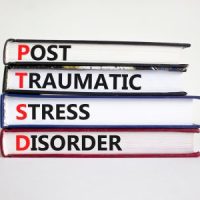The Genetics of Post Traumatic Stress Disorder

Scientists believe they’ve linked PTSD with ninety-five hotspots in the genome, including eighty that were previously unknown.
In what may be the largest PTSD study to date, a consortium of scientists from around the world combined multiple collections of genetic data from more than one million people.
The researchers used this huge data collection to conduct a genome-wide association study (GWAS). These involve sequencing the genomes of many individuals who either do or don’t have a condition. Researchers then look for genetic features, or “markers,” which are short snippets of DNA with a known location in the genome that vary between individuals. Markers that are more prevalent in individuals with the disorder could therefore play a role in how it develops.
In addition to these genetic markers, the research also uncovered multiple proteins that could be used as measurable signs of a person’s PTSD susceptibility. This was also the first time the X chromosome was included in a PTSD study, and the work identified the estrogen receptor gene near a risk marker.
“This is a very exciting paper, really a landmark study for advancing the understanding of the genetic architecture and biological mechanisms underlying PTSD,” said Carrie Bearden, a professor of neuroscience and human behavior at UCLA who was not involved in the study. “It’s really the first study to have the power to parse both shared and disorder-specific risk loci and link them to underlying biological systems.”
PTSD and Science
The effects of Post Traumatic Stress Disorder, like depression and nightmares, have been known for centuries. Four hundred years ago, Hotspur, a character in William Shakespeare’s Henry IV, Part 1, experienced similar symptoms after his return from combat.
His wife, Lady Percy, doesn’t understand why he has “given my treasures and my rights of thee to thick-eyed musing and curst melancholy,” or why, in his sleep he “murmurs tales of iron wars, speaks terms of manage to thy bounding steed, and cries ‘Courage! To the field!’” while mumbling “of cannon and culverin, of prisoners’ ransom and of soldiers slain, and all the currents of a heady fight.”
However, until very recently, scientists haven’t understood what causes PTSD. Now, they agree that PTSD is a brain injury, just like a concussion is a brain injury.
Extreme stress, like combat stress, alters the brain’s chemical makeup. The hippocampus (part of the brain that controls logical responses) shrinks. As a result, the amygdala (emotional responses) grows.
Think of a cowboy (hippocampus) on a horse (amygdala). If the cowboy doesn’t control the horse, the animal runs wild.
Car crashes are, by far, the most common non-combat cause of Post Traumatic Stress Disorder. Currently, some treatments are available. However, they’re usually hit and miss treatments. What works for some people may not work for others.
Legal Issues
Compensation for PTSD and other brain injuries is available if a Sugar Land personal injury lawyer proves negligence, or a lack of care, by a preponderance of the evidence, or more likely than not.
Generally, drivers have a duty of reasonable care. They must be at their best, mentally, physically, and otherwise, when they get; behind the wheel. Then, as they drive, they must obey all the rules of the road and avoid accidents if possible.
Drivers breach their duty of care if they operate motor vehicles while impaired. Alcohol misuse and extreme fatigue are the most common causes of driver impairment. These two conditions have basically the same effect on the brain and body. They both cloud judgment and impair motor skills.
Motorists also breach their duty of care if they drive aggressively (speeding, running a red light, turning illegally, etc.).
Usually, the police accident report is the most important bit of evidence in a car crash claim. The report could be perfectly accurate, or it could be biased or incomplete. For example, if the victim died in the crash, the reporting officer only heard the tortfeasor’s (negligent driver’s) side of the story.
Frequently, a Missouri City personal injury lawyer uses electronic evidence, like surveillance camera video, to fill in any gaps.
Reach Out to a Hard Hitting Fort Bend County Attorney
Injury victims are entitled to significant compensation. For a confidential consultation with an experienced personal injury attorney in Missouri City, contact the Henrietta Ezeoke Law Firm. Virtual, home, and hospital visits are available.
Source:
nature.com/articles/s41588-024-01707-9.epdf?sharing_token=ShseukK0CjZGYTNEADz0YdRgN0jAjWel9jnR3ZoTv0PmqFIsotwjEJ1wncMQ7Rj6I1rp6k8WLVBTaWh2I5p-bIQDPE7GQzqi_8DwUHu2YoMre1o4u6IpEeZbRMLqgtVq-8JMVK5eJs-bK4XcdePSXvESNb3p4-jJL68kk6Zv_ZN9XAle4IFLToFWwsrT-qA8HkJsUR1CD9FeSEPZIf0X6pcypw6ManUdTjk62r_UnIEIEeUIaUMljaPgUiuoH7anVlL_Wv4c8kUqjbbkSpmB886RgY5REHM5wmdGAG9lkRafY7Eqw17wCu3n-SNqtxr9&tracking_referrer=www.livescience.com
